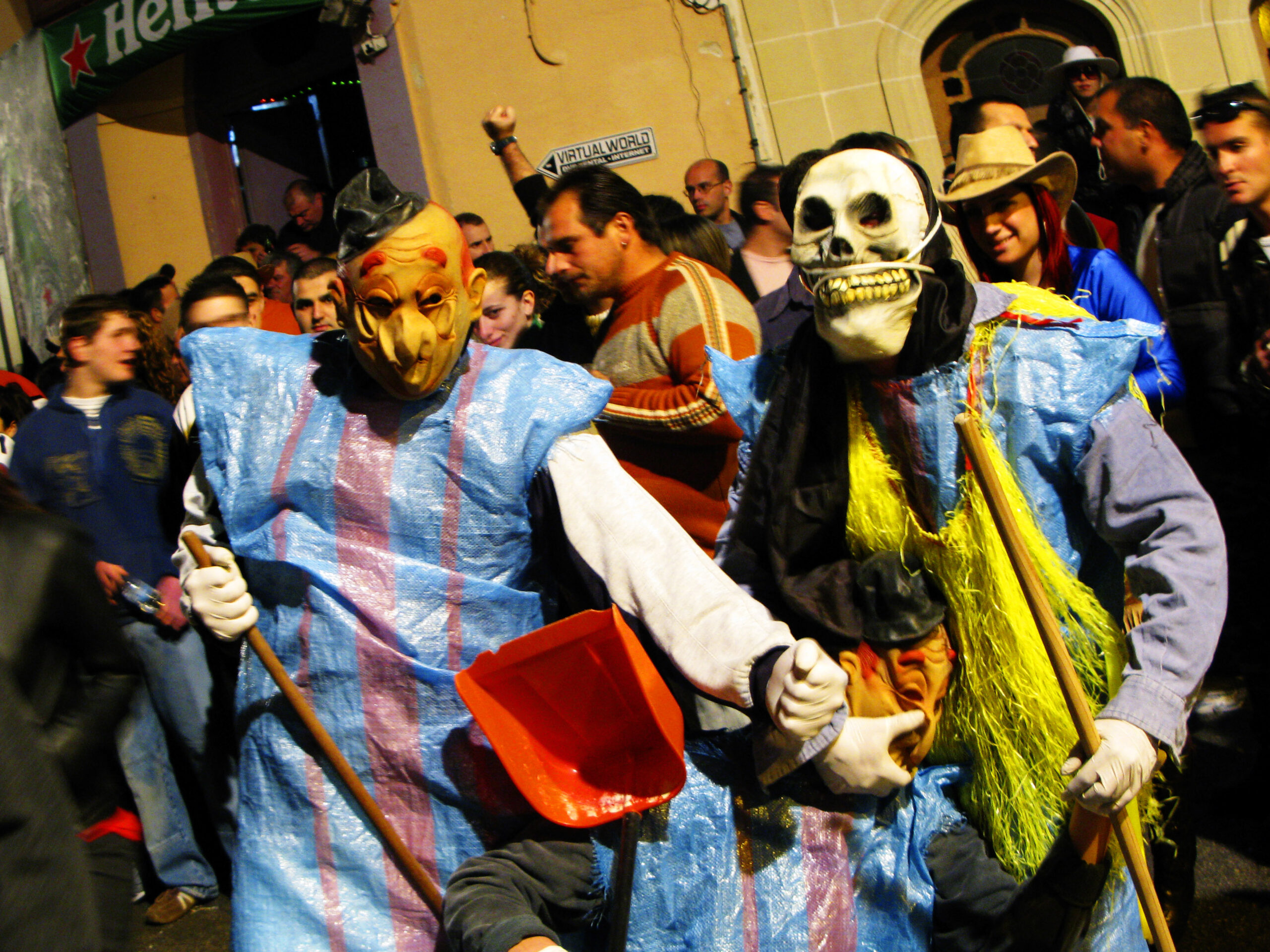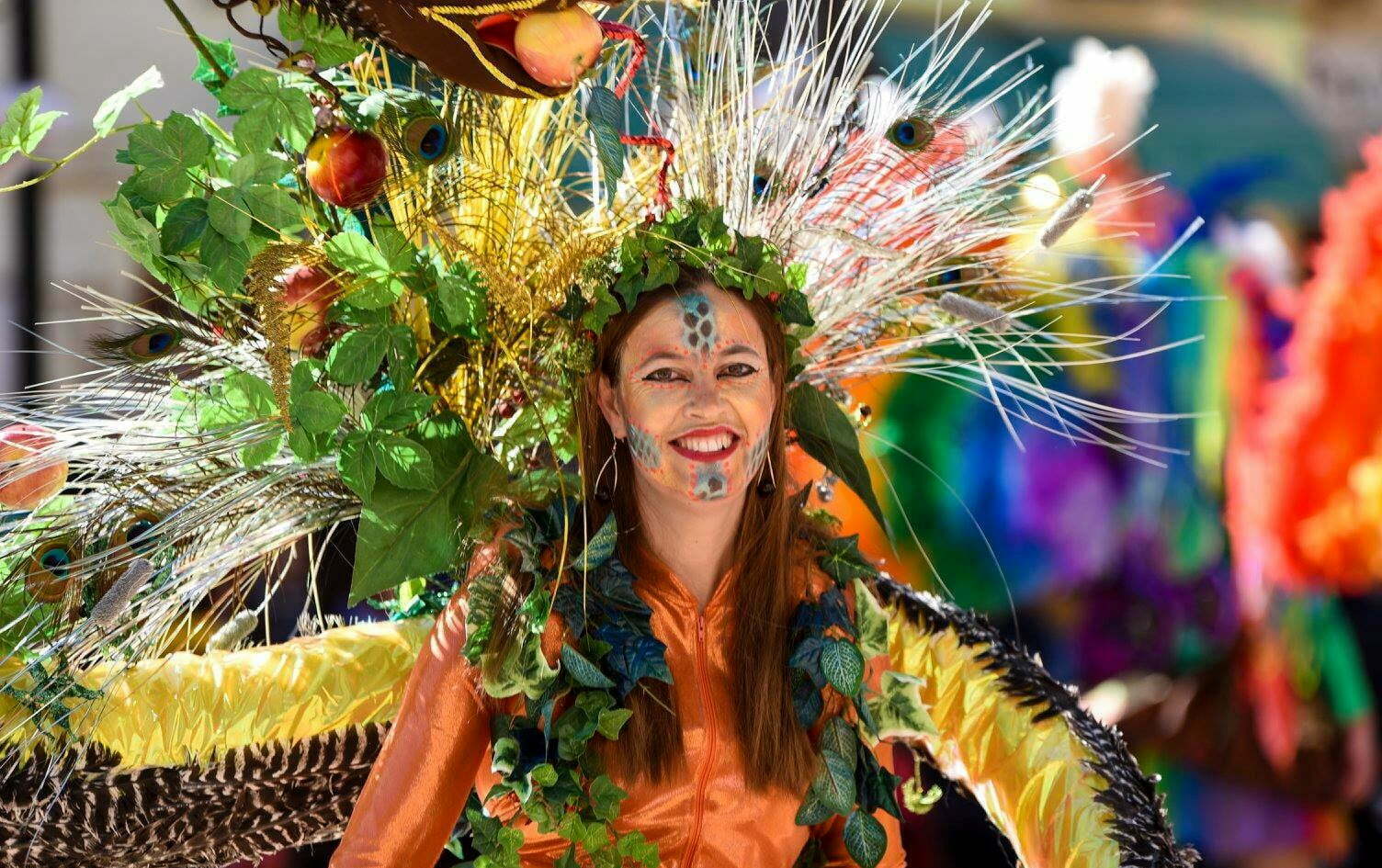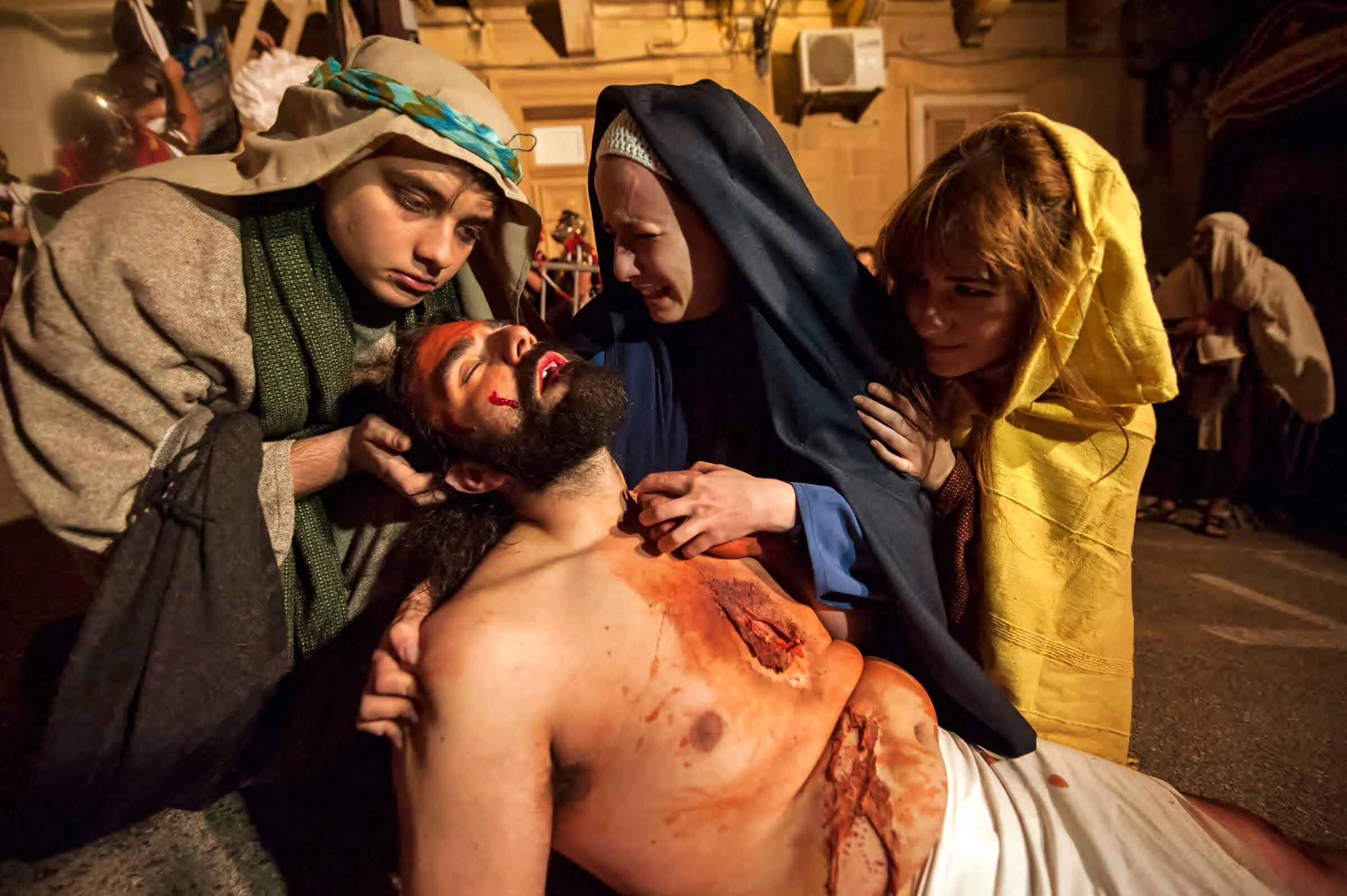Although local folklore reaches its climax during the festas , but there are several other folkloristic celebrations throughout the year.
Carnival is celebrated on the five days preceding Ash Wednesday. It usually falls in February. Initiated during the Aragonese rule (before 1530), the celebration has continued to grow and expand. Colourful artistic floats, grotesque masks and dance companies of all ages and sexes parade the streets of the capital throughout the five days. A spontaneous carnival is organised after sunset in several villages of Gozo. One of the most famous and authentic celebrations may be witnessed in Nadur. Hundreds of people walk up and down the main streets dressed in comically distorted figures and the most imaginative and creative costumes and masks to conceal their identities. The common denial to speak completes the disguise and explains the well known expression ‘Silent Carnival’. People of Nadur claim that they don’t have blood running through their veins, but they have carnival.






The week from Palm Sunday to Easter Sunday, known in the Christian calendar as Holy Week, is full of religious and folkloristic shows. The central event is the Good Friday procession during which several life-size statues representing various moments from the passion and death of Christ are paraded through the village streets. Several men make vows to walk in the procession carrying a heavy cross or dragging heavy iron chains tied to their ankles. They wear hoods to conceal their identities. Scores of boys and young men are dressed in period costumes to add to the pageantry of the manifestation. Most impressive is the Roman Legion, a gleam of breastplates, spears and shields, who announce themselves with trumpets and drum rolls. The procession is accompanied by the village band.

On Easter morning there is a procession with the statue of the Risen Christ in several villages. When the statue reaches the village square, the bearers stop for a moment and then, running, return the Risen Christ into the church.
Mnarja (the illuminated) is the feast dedicated to Saint Peter and Saint Paul, celebrated on 29 June.
On the eve of Mnarja, Gozitans used to flock to Il-Buskett in Nadur, where merry-makers feasted on rabbit fried in garlic and an abundance of wine. Bonfires and guitarists entertained the crowds. Today, this merrymaking is not so much in evidence, except the traditional horse and donkey races held on the day at Nadur, which attract a large number of people. On the Sunday preceding 29 June, an agricultural show is organised where a variety of local produce and livestock is exhibited.
Mnarja was an important feast in days gone by, so much so that it was written in wedding contracts that the groom had to take his bride to the feast during their first year of marriage.

On 14 and 15 August a large scale Agricultural and Industrial Exhibition is held at il-Mall, Victoria’s public gardens. Inspired by the Great Exhibition of London of 1851 and held since 1855, it has enormous importance for the mainly agricultural community of Gozo. Farmers await this occasion to display the best produce of their fields and farms. They pride themselves with the giant pumpkins and the clearest honey, with the fattest cow and the most colourful plumage of the peacock. Though fewer people depend on agriculture, the show is still very popular. Prizes to the best exhibitors are distributed on the morning of 15 August by the President of Malta.
The Ġostra is held on the first Sunday of September. This was once a very popular summer event in fishing villages, but it survives only in Xlendi. This traditional sport consists of competitors going up a greased pole projecting from a headland over the sea to grasp a flag at its end. Both winners and losers end up in the sea. There are several other traditional sports activities on the same Sunday that coincide with the celebration of the village festa.
Victory day is celebrated on 8 September. On this day the Maltese celebrate the feast of the Nativity of the Virgin Mary as well as the end of the 1565 Great Siege, when the Knights, aided by the Maltese, inflicted a great defeat on the Turks. There is a pontifical Mass at the cathedral and a military parade in Pjazza Indipendenza. A scholar delivers a speech to commemorate what is perhaps the greatest victory in Maltese history.
Christmas time in Gozo is becoming increasingly attractive. For centuries, people have built cribs in their homes and bagpipers have gone through the streets playing traditional tunes. Now, the main streets are decorated with twinkling lights, and large cribs are displayed in front of churches and in main squares. On the evening of Christmas Eve members of the Christian Doctrine Society organise a procession with a statue of Baby Jesus through the village streets. All the local young boys and girls take part. In most villages the procession takes the form of a pageant with participants dressed in period costumes. It ends in the parish hall with a Christmas play. During midnight Mass held in all parish churches, a young boy delivers the sermon.
